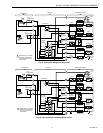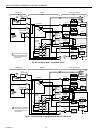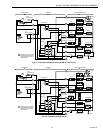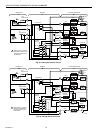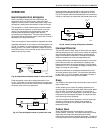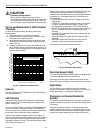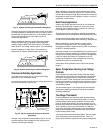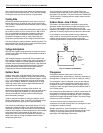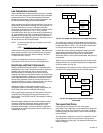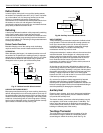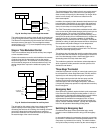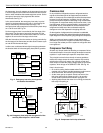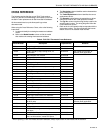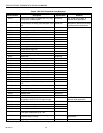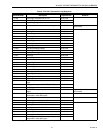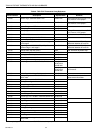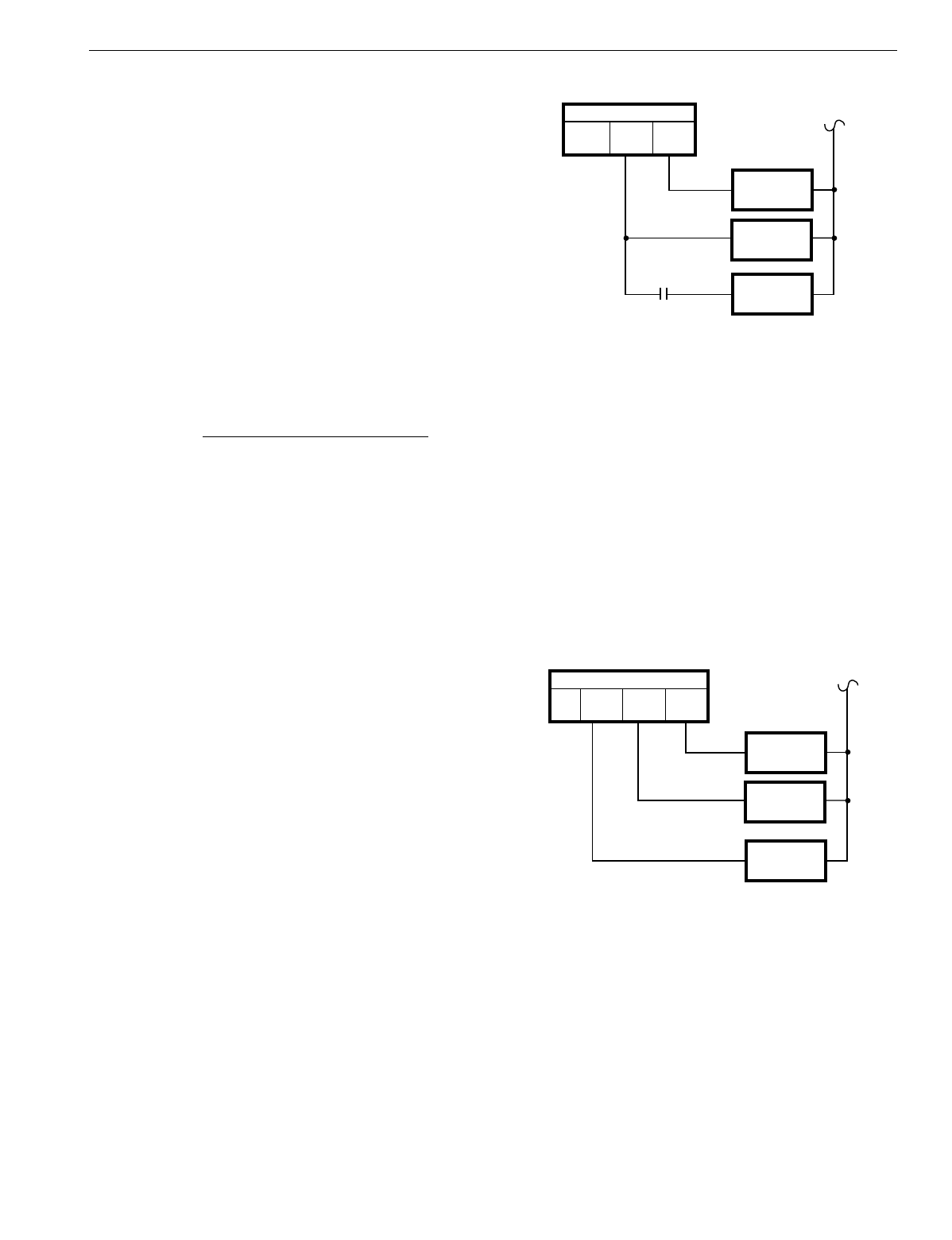
T874 MULTISTAGE THERMOSTATS AND Q674 SUBBASES
25 60-2485—8
Low Temperature Lockouts
Some manufacturers of heat pumps have previousl
y
controlled
their units so the compressor was locked out below a specified
outdoor temperature. This was done because of the stress
placed on the compressor b
y
the ver
y
cold temperatures, and
the fact that efficienc
y
drops off at low temperatures.
Other manufacturers sa
y
that althou
g
h efficienc
y
is low at cold
temperatures, the problem of startin
g
the cold compressor is
the most critical point. It is more important to keep the
compressor runnin
g
than to shut it off and tr
y
to restart it when
the temperature warms up to +10°F
(
-12°C
)
. Also the
crankcase heater, which can run onl
y
when the compressor is
off, compensates for the lower compressor efficienc
y
. So, it is
e
q
uitable to let the heat pump run even with a coefficient of
performance
(
COP
)
sli
g
htl
y
less than one, rather than to turn it
off and have to run the crankcase heater.
NOTE: To determine the COP of a heat pump, use the fol-
lowin
g
formula:
COP =
Btu Out/Btu we pa
y
for or Btuh Capacit
y
Unit Watta
g
e x 3.413 Btu/Watt
Another factor favorin
g
this control strate
gy
is that newer heat
pump desi
g
ns maintain a level of efficienc
y
even at outdoor
temperatures well below zero. Some brands do not reach
1.0 COP until -25°F
(
-32°C
)
.
Virtuall
y
all manufacturers now let the heat pump run
continuousl
y
rather than lock it out at cold temperatures.
Heat Pumps with Dual Compressors
Sta
g
in
g
residential sized heat pumps is a re
q
uirement that
developed from the need to make heat pumps as efficient as
possible. One of the methods used to improve overall
seasonal efficienc
y
is to reduce the amount of time the
machine is operatin
g
in a transitional mode. Transitional mode
is startin
g
and stoppin
g
in addition to recoverin
g
from defrost.
Under li
g
ht loads, when the heat pump is c
y
clin
g
on and off,
this can be a si
g
nificant amount of time and can result in a
si
g
nificant efficienc
y
reduction. Capacit
y
control is one wa
y
to
reduce the c
y
clin
g
rate and improve the efficienc
y
.
Additional capacit
y
control methods used on other
refri
g
eration s
y
stems
(
unloadin
g
, multiple compressors
)
are
not as likel
y
to be seen on residential heat pumps.
With a sin
g
le-sta
g
e heat pump, the compressor is normall
y
controlled b
y
the first sta
g
e and the auxiliar
y
heat b
y
the
second sta
g
e. The T874G, N and R Thermostats are used for
this purpose.
With a two-sta
g
e compressor, the two thermostat switches
control the individual compressor sta
g
es. Auxiliar
y
heat is
controlled alon
g
with the compressor sta
g
e-two, b
y
the
thermostat second sta
g
e. It comes on with the compressor
hi
g
h speed if an outdoor thermostat—wired in series with it—
is made. See Fi
g
. 35.
Fig. 35. Two-stage heat pump with two-stage thermostat.
The outdoor thermostat is set at the balance point with both
heat pump sta
g
es runnin
g
. So if the heat pump can control the
heatin
g
load down to +20°F
(
-7°C
)
, the auxiliar
y
heat comes
on with the second sta
g
e of the compressor.
In effect, this control strate
gy
chan
g
es the heat input of the
second sta
g
e, dependin
g
on the amount of heat needed.
Additional sta
g
es of auxiliar
y
heat can be added with or
without the control of more outdoor thermostats, See Auxiliar
y
Heat section.
Another wa
y
to control a two sta
g
e heat pump is with a three-
sta
g
e thermostat. The T874W is desi
g
ned for this application
as well as others. See Fi
g
. 36.
The advantage of this system is that no auxiliary heat is used
until there is an actual demand from the controlled space.
Fig. 36. Two-stage heat pump with three-stage
thermostat.
Two speed Heat Pump
One wa
y
to control capacit
y
is to use a two-speed
compressor. The compressor runs at low speed for sta
g
e-one
heatin
g
and coolin
g
. The compressor runs at the low speed
instead of c
y
clin
g
the heat pump on and off under some li
g
ht
load conditions.
The hi
g
h speed is sta
g
e-two coolin
g
. The compressor runs on
hi
g
h speed when loads increase so the low speed can no
lon
g
er handle the coolin
g
load. This reduces c
y
clin
g
rate and
improves capacit
y
.
M5838
THERMOSTAT
HEAT 2
HEAT 1
OUTDOOR
THERMOSTAT
COMP.
STAGE 2
AUXILIARY
HEAT
COMP.
STAGE 1
M5837
COMP.
STAGE 2
THERMOSTAT
HEAT 2
HEAT 1
AUXILIARY
HEAT
HEAT 3
COMP.
STAGE 1



